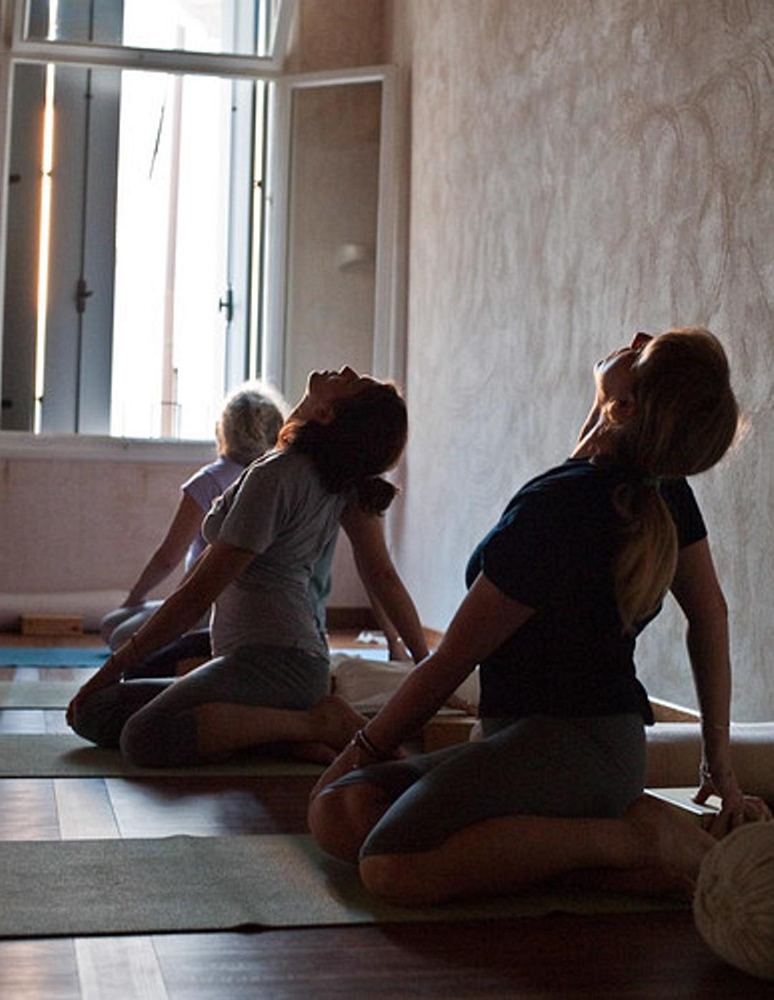Last Updated on: 18th December 2024, 12:32 pm
Yoga is an ancient practice originating from India over 5,000 years ago, now widely recognized for its benefits on both mind and body. It has become a key component in Western fitness routines due to its ability to enhance physical and spiritual well-being. Yoga’s holistic approach to fitness focuses on physical strength, flexibility, balance, and mental clarity. It offers a range of practices from gentle stretches to challenging poses, making it ideal for improving flexibility and building strength.
- Yoga uses postures and breathing techniques to increase flexibility and strengthen muscles.
- This approach enhances fitness and reduces injury risk, making yoga a comprehensive tool for physical health.
Understanding Flexibility and Strength in the Context of Yoga

Flexibility and strength are essential for a healthy body. Flexibility allows muscles and joints to move through their full range of motion, while strength is the ability of muscles to perform movements against resistance. Yoga effectively addresses both through its poses and practices.
- Yoga combines strength and flexibility, unlike traditional workouts that focus on one.
- Poses stretch muscles to enhance flexibility and build strength by maintaining them.
Yoga also incorporates breath control, mindfulness, and alignment, elevating it from physical exercise to a holistic practice. Breath deepens stretches, aids balance, and strengthens the core. Mindfulness enhances the mind-body connection, and proper alignment prevents injuries, ensuring effective poses.
Yoga promotes flexibility, strength, mental clarity, and focus, making it a valuable tool for physical health and mindfulness.
Key Yoga Poses for Enhancing Flexibility

Yoga connects flexibility and strength through specific poses targeting major muscle groups. These asanas stretch and strengthen the body, improving flexibility. Here are some key poses:
Forward Folds: The Gateway to Flexibility
- Uttanasana (Standing Forward Fold) and Paschimottanasana (Seated Forward Fold) stretch hamstrings, calves, and hips.
- These folds release tension and deepen stretches with each exhale.
Lunges: Strengthening Through Stretching
- High Lunge and Warrior series enhance flexibility and build leg and core strength.
Twists: Revitalizing Flexibility
- Twists like Ardha Matsyendrasana (Half Lord of the Fishes Pose) and Parivrtta Trikonasana (Revolved Triangle Pose) benefit the spine and abdominal muscles.
To increase flexibility safely, approach these poses with patience and consistency. Warm up before starting, and listen to your body to avoid forcing poses. Regular practice will make these poses more accessible, improving flexibility and well-being.
Incorporating these poses can enhance flexibility, strength, and mental clarity. The journey to flexibility requires patience and persistence, but yoga makes it fulfilling.
Key Yoga Poses for Building Strength

Building strength through yoga involves poses targeting the core, upper body, and lower body. This approach ensures balanced muscular development. Here are effective poses for strength:
Plank Variations: The Core of Strength
- Plank Pose, Side Plank, and Dolphin Plank engage multiple muscle groups, stabilizing the spine and strengthening the core.
Warrior Series: Empowerment in Action
- The Warrior series, including Warrior I, II, and III, strengthens the lower body and improves balance and stamina.
Arm Balances: Elevating Strength
- Arm balances like Crow Pose, Side Crow, and Eight-Angle Pose challenge arms, shoulders, and chest, engaging the core for balance.
Incorporate these poses mindfully into your practice. Start with foundational poses to build strength, then gradually introduce more challenging asanas. Consistent practice will improve strength, balance, and overall health. Yoga is a powerful tool for building strength, both physically and mentally.
By including these poses, you’ll enhance your physical capabilities. Yoga offers a challenging and rewarding path to strength, inviting exploration of physical and mental endurance. Embrace these poses with dedication to see your strength grow.
The Synergy of Flexibility and Strength in Yoga Practice

In yoga, flexibility and strength are interconnected, enhancing each other. This synergy is both a physical and metaphorical balance. Understanding this interplay can transform your yoga practice.
Improving flexibility can enhance strength, as a more pliable body allows deeper engagement in poses, strengthening muscles. Conversely, building strength helps hold poses longer, increasing flexibility. This relationship highlights yoga’s holistic nature, where progress in one area fosters improvement in the other.
Balance in yoga extends beyond physical stability, promoting equilibrium in life. It teaches steadiness amidst change, strength amidst vulnerability, and flexibility in convictions. This balance, cultivated on the mat, influences how we handle challenges with grace and resilience.
Embracing flexibility and strength in yoga enhances physical health and fosters a balanced mindset, helping navigate life’s ups and downs. The essence of yoga lies in the harmony of opposites, a lesson that extends beyond the mat.
Incorporating Yoga into Your Routine for Maximum Benefit

To maximize the benefits of yoga, consider these tips:
- Start Small: Begin with foundational poses, focusing on form and breath. Start with 15-20 minute sessions, increasing as you progress.
- Consistency Over Intensity: Practice several times a week for better results than intense sessions. Establish a routine with morning or evening sessions.
- Progressing in Your Practice: Intermediate and advanced practitioners should hold poses longer, explore complex asanas, and include meditation and pranayama.
- Workshops and Retreats: These offer new insights and techniques, while home practice allows personal exploration and refinement.
- Listen to Your Body: Adjust practice frequency, duration, and intensity based on your body’s needs to keep it nurturing.
- Balance and Mindfulness: Successful yoga practice requires balance and mindfulness. Respect your body’s limits for a sustainable journey.
Wrapping It Up
Yoga combines strength and flexibility, offering a path to resilience and discovery. By integrating physical poses with mental clarity, yoga leads to a balanced and empowered self. Use yoga to navigate life’s challenges with grace and strength, achieving a healthier, more flexible, and stronger you.

